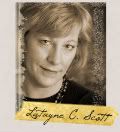
The first editor who accepted a proposal for one of my books was a man named Peter Gillquist, senior editor for Thomas Nelson. Under his guidance, my first nonfiction book took shape, and that book has stayed in print most of 32 years.
Gillquist was about as “evangelical” as you could get. His background was leadership with Campus Crusade for Christ, and Thomas Nelson prided itself on representing mainstream Protestant Christianity. In fact, after all of Gillquist’s careful mentoring, he called his colleague and old friend at Zondervan to publish The Mormon Mirage since Nelson risked losing its largest King James Bible customer—the Mormon Church – if Nelson published a book as controversial as mine.
While he was helping me shape the book about my spiritual journey, unbeknownst to me he was on a journey of his own. He and other prominent members of Campus Crusade for Christ sought a restoration or at least a renewal of a purer version of New Testament Christianity than they had previously experienced. First in house churches and then as a burgeoning movement, they became convinced that the Orthodox arm of Christianity was the only unchanged church throughout history, and that it aligned with their aims.
So Gillquist went from being a pastor to being a priest, and there is a universe of difference in those two. That's when Orthodox Christianity came onto my radar, so to speak. When I taught world religions and worldview at Trinity Southwest University, I emphasized that Orthodox churches don’t just have a different history, hierarchy, liturgy and worship style than Catholics and Evangelicals, they have a significantly different view of Jesus that is reflected in their art.
Now, it’s difficult to boil evangelical Christian art down to a definition. I’m not sure there’s even such category that could be efficiently defined. But theologians and sociologists of religion have noticed a distinct difference between most Catholic religious art and most Orthodox religious art. And it’s not just that much Catholic art is three-dimensional (as in statues) whereas most Orthodox art is two dimensional (as in icons.)
You see, when you go into a Catholic church, most images of Jesus are of Him suffering on the cross. The emphasis is on His passion, His identification with us to pay for our sins. These images induce a reaction, call for an emotional response.
However, most Orthodox images of Jesus emphasize either His authority and dignity (with a clear-eyed gaze at the beholder), or as a triumphant resurrected Conqueror of death. In both cases in Orthodoxy, He is serene.
So why did you get a religious history lesson today on Novel Matters? Did you come here for art instruction?
I am wondering if some of the wide divergence in the types of fiction that Christians read is similar? Do some of us write and buy fiction that calls the reader to emotion and action? And do others write and buy something more contemplative, with a very different aim?
Can you suggest pairs of Christian books, ones you’ve read, that reflect these two different aspects?












7 comments:
Anybody else had trouble with trying to post a comment? I guess the fact that I finally can do so means the problem was fixed.
My two examples from recent reading: Pilgrim at Tinker Creek by Annie Dillard fits the "contemplative" category, and The Passion of Mary-Margaret was one that stirred my emotions and helped me examine motives (and made me feel guilty in a good way.)
You took one of my examples!! The Passion of Mary-Margaret is extraordinary and caused me to desire a closer relationship with Jesus!
Okay, here's a pair for you. And both by Lisa Samson (because that's where my mind is going right now).
Embrace Me (which makes me contemplate redemption and forgiveness) and Quaker Summer (which makes me want to scrub the floor boards of a kitchen in a homeless shelter).
I tend to write more to inspire action. But every once in a while a contemplative pieced sneaks out of me. I enjoy both as a reader and writer.
Interesting interpretations of the artists' intents.
Orthodoxy is synonymous with legalism for me--I apologize to all of you whose hearts embrace it. I'm sure your relationships with Jesus are wonderful and admirable. I'm not criticizing any born again believers who follow this arm of Christianity.
I loved The Passion of Mary-Margaret because it rose above "orthodoxy" and Catholicism to accentuate the loving, personal relationship with Jesus. I think it fired on all cylinders.
Susie and Nicole, I guess we all like Lisa Samson's writing. I appreciate that!
Nicole, I've had to educate myself quite a bit on Orthodox churches. You probably already know this, but most of them take the names of countries, like Greek Orthodox, Syrian Orthodox, Russian Orthodox. One thing that has helped me look past the "baggage" that the word orthodox carries is to think of them as Eastern Christians.
You know I was also thinking about some of the classics. Jane Austen, the Brontes, Alcott, all wrote from the Christian worldview. But they seem to be on the contemplative side. Whereas Harriet Beecher Stow and Bram Stoker would be more action based (Stow to combat slavery and Stoker to...well...combat evil).
This is a fun exercise for my geek brain! Thanks!
I read fiction for action and non-fiction for contemplation. The books that I love best for both are Sick Heart River by John Buchan and The Light that Failed by Rudyard Kipling.
Susie and Henrietta, you both brought up books that I have either never heard of, or wouldn't have thought fit in those two categories. You made me think! (And scurry to websites to find out about both of Henrietta's books.)
Post a Comment